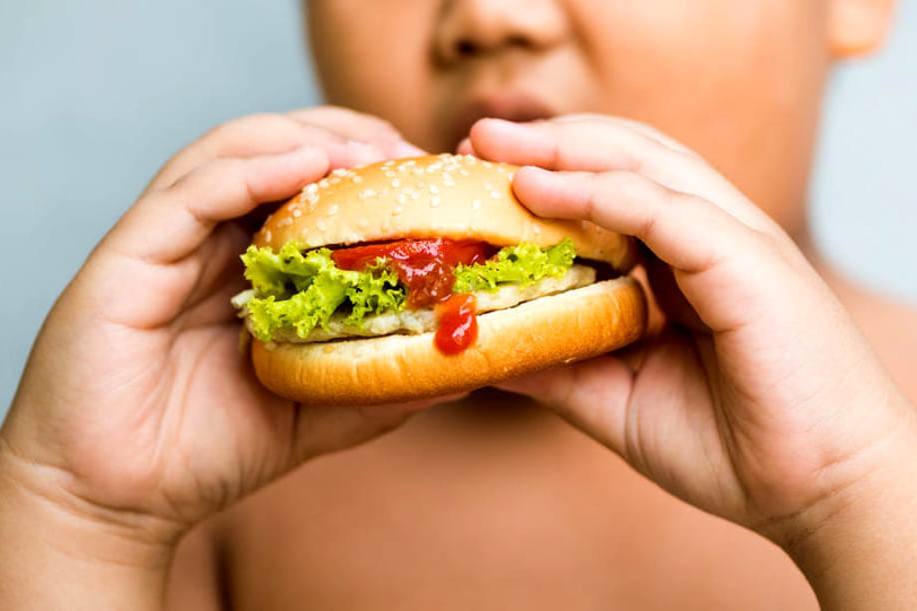
Malnutrition 'by excess' or overnutrition: obesity and overweight increasing health problems for our children
Malnutrition and paediatrics: obesity and overweight in children are major health problems in our country and a danger to children’s future health
Malnutrition, as defined by the World Health Organisation, is an imbalance between the amount of food and nutrients required by the body for growth and maintenance of its specific functions and the amount of nutrients actually consumed.
Both hyponutrition or malnutrition by defect (weight deficiency) and hypernutrition or malnutrition by excess (excess weight) fall into the category of malnutrition
Italy and the United States have for decades had the highest percentages of children with excess weight, although in recent years values have been slightly decreasing in Italy for some age groups: we have gone from 23.2% of overweight children in 2008-2009 to 21.3% in 2016, while obese children have gone from 12% in 2008-2009 to 9.3% in 2016.
However, the problem remains among the most worrying for today’s children and tomorrow’s adults.
CHILD HEALTH: LEARN MORE ABOUT MEDICHILD BY VISITING THE BOOTH AT EMERGENCY EXPO
Malnutrition by excess: in more than 95% of cases obesity is primary or essential, i.e. not caused by a disease
Essential obesity originates from several factors.
It is always the result of an imbalance between the proportion of energy ingested and that consumed by the body, but genetic (predisposition counts for more than 50%) and environmental factors can also contribute to it, such as:
- Maternal nutritional status during pregnancy;
- Birth weight;
- The type of breastfeeding;
- The speed of growth in the first year of life;
- Diet;
- The level of sedentariness or conversely the intensity of physical activity.
Among children with excess weight, only a small proportion (less than 5%) have genetic or endocrine diseases that predispose them to obesity, or are obese due to the medication they have to take.
It is the paediatrician’s task to detect these forms early on the basis of symptoms and a careful collection of the child’s history:
- The age at which the obesity presents;
- The possible association with stunted or reduced growth in stature;
- The neuro-psychomotor development;
- The presence of deformities, including facial deformities (dysmorphisms);
- The use of drugs (corticosteroids, sodium valproate, risperidone, phenothiazines, cyproheptadine, etc.).
- Depending on the suspicion, the paediatrician may request specific examinations to also assess endocrine-based and genetic-based obesity.
Obesity is a clinical condition characterised by an excess of fat mass that reduces life expectancy and health
In fact, there is no unanimous agreement among researchers on the most appropriate methods to identify the borderline between normal weight, overweight and obesity in childhood.
Excess weight that begins in childhood, in any case, tends to persist into adulthood (70-80% of obese adolescents tend to become obese adults), so an early diagnosis of malnutrition by excess and an equally early therapeutic intervention is very important.
Malnutrition by excess and anthropometric measurements (BMI)
As in malnutrition by default, in malnutrition by excess anthropometric measurements (weight, height/length, weight/length ratio and calculation of the body mass index or BMI) are sufficient to define overweight or obesity and also to estimate the simple risk of overweight.
In the case of children under 2 years of age, the weight/length ratio is important, i.e. there is no absolute ideal weight, but it is important that the child’s weight is well proportionate to his or her height, while in the case of children over 2 years of age, the so-called body mass index (BMI or Quetelet index) is considered, calculated by dividing the weight, expressed in kg, by the square of the height, expressed in metres.
This data in the case of a child should always be compared with the normal growth curves for age and should be monitored over time to assess the trend.
It is important when assessing a child with overweight or obesity to also consider the possible presence of other diseases such as:
- Hypertension;
- Pre-diabetes and diabetes mellitus;
- Dyslipidaemia;
- Non-alcoholic hepatic steatosis;
- Gastro-oesophageal reflux;
- Polycystic ovary syndrome;
- Sleep-disordered breathing;
- Orthopaedic complications;
- Idiopathic endocranial hypertension;
- Psychosocial problems;
- Uncontrolled eating disorder.
All these conditions signal a situation of more severe malnutrition by excess, which may require multidisciplinary management in second- and third-level specialist facilities
The goals of treatment for excess malnutrition are different depending on the severity of the excess weight (or overweight) and the age of the child.
In particular in overweight children who are less than 5 years old, a slowing down of weight gain must be achieved, and in obese children a ‘firm weight’ condition must be achieved.
In children between 5 and 11 years of age, ‘firm weight’ must be achieved in overweight children, and in obese children, a weight loss of no more than half a kilogram/week must be aimed for.
Finally, in children over 11 years of age, the goal in overweight is ‘firm weight’ while in obesity one aims for a weight loss of no more than 1 kg/week.
These goals can be achieved with dietary and behavioural therapy
Guidelines advise against the use of low-calorie diets except in absolutely selected cases.
The treatment of obesity in excess malnutrition must be guaranteed by multidisciplinary support involving several professions at different levels of complexity: the family paediatrician cannot manage complicated obesity alone (in such cases he or she must seek help from second- and third-level specialist structures).
Moreover, it is important that the management of obesity is taken care of not only by health professionals but by all those professions that work with children, so health policies must guarantee adequate health promotion and ensure that all the places frequented by children (not only schools!), work together to guarantee a correct lifestyle.
Second-line treatments such as pharmacotherapy and bariatric surgery have limited indications because their effectiveness is limited to cases that must be carefully selected.
In children aged 12 years or older in whom lifestyle intervention to limit weight gain has failed, an indication for pharmacotherapy may be considered.
The indication for bariatric surgery is acceptable in already developed adolescent patients (pubertal stage 4-5 according to Tanner and reaching or approaching the stature target) with
- BMI greater than or equal to 40 kg/m2 and associated non-serious diseases such as mild obstructive sleep apnoea (apnoea/hypopnoea index or AHI greater than 5), hypertension, dyslipidaemia, impaired glucose tolerance;
- BMI greater than or equal to 35 kg/m2 and at least one severe associated disease such as type 2 diabetes mellitus, moderate-to-severe obstructive sleep apnoea (AHI greater than 15), benign endocranial hypertension, non-alcoholic steatohepatitis with significant fibrosis.
Psychotherapy should instead be encouraged in all cases that may require psychological support.
Prevention of obesity and malnutrition due to excess must be started from the prenatal period by preventing too low or too high a birth weight, prematurity and other complications
In the post-natal period, on the other hand, it is important to follow certain behavioural rules: avoid sugary drinks in the first two years of life, and do not increase the protein quota more than the recommended intake levels.
The Italian Society of Paediatrics and the Italian Society of Paediatric Endocrinology and Diabetology have drawn up a useful decalogue for the prevention of malnutrition due to excess:
- Check your weight and height regularly (at least every six months);
- Have five meals a day, avoiding ‘out-of-meals’;
- Consume at least five portions of fruit or vegetables a day;
- Drink plenty of water, limiting sugary drinks;
- Reduce fat at the table, especially cold meats, fried foods, condiments, sweets;
- Avoid using food as a ‘reward’;
- Give preference to outdoor play, if possible at least one hour a day;
- Walk on as many occasions as possible;
- Play a sport regularly. It is not important to be a champion at all costs, but to exercise and have fun;
- Limit ‘video addiction’ during leisure time: maximum 2 hours per day.
Read Also:
Emergency Live Even More…Live: Download The New Free App Of Your Newspaper For IOS And Android
Obstructive Sleep Apnoea: What It Is And How To Treat It
Obesity In Middle Age May Influence Earlier Alzheimer’s Disease
Viral Infections In UK, Dangerous Viruses And Bacteria Prevalent In The UK
Clostridioides Infection: An Old Disease Which Became A Current Matter In Healthcare Sector
A Baby’s Gut Bacteria May Predict Future Obesity
Cot Death (SIDS): Prevention, Causes, Symptoms And Case Rates



